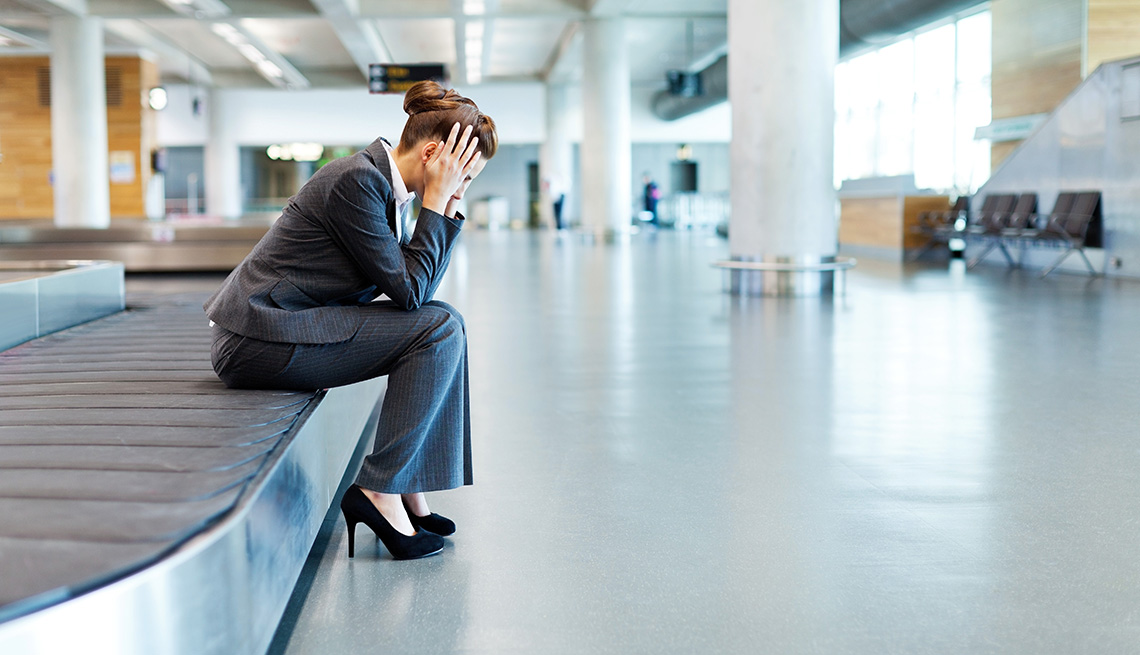
How to handle lost, damaged or delayed luggage
- Select a language for the TTS:
- UK English Female
- UK English Male
- US English Female
- US English Male
- Australian Female
- Australian Male
- Language selected: (auto detect) - EN
Play all audios:

Once the bag is officially declared lost, you may begin the claims process for a lost bag. (This is different than the initial report you made after noticing your bag was missing.) The exact
claims process varies by airline, but regulations cap reimbursement at $3,500 per traveler for domestic flights and around $1,600 for most international flights. Southwest Airlines and
American Airlines, for example, allow customers to initiate a claim if their luggage isn’t located within five days. United Airlines allows customers to do so after three days. (United also
allows customers to bypass the claims process and accept a lump sum of $1,500 if their luggage isn’t located within that time frame.) As part of the claims process, you’ll fill out paperwork
detailing the contents of the lost bags and their value. The airline will likely ask for sales receipts or other documentation to back up your estimates. The Department of Transportation
cautions that if you don’t have these records, you can expect to negotiate with your airline. 5. Waiting for payment. Once your claim has been submitted, it can take an airline anywhere from
four weeks to three months to reimburse you. Remember, reimbursement is capped at $3,500 per traveler for domestic flights and around $1,600 for most international flights. This amount is
based on the depreciated value of your belongings, not their original cost. Fortunately, a truly lost bag is a rare occurrence. According to the leading air-transport informational
technology firm SITA, of the small percentage bags that are damaged or delayed in the first place, only 5 percent are never recovered. 6. Other routes for reimbursement. Because airlines
assess claims based on the depreciated value of your belongings, the payout from a claim may not fully make up for your loss. Luckily, you can look to recoup elsewhere. The Department of
Transportation recommends checking your homeowner’s or renter’s insurance policy, which might cover losses away from home. Also, many credit cards offer reimbursement for lost or delayed
luggage if you used that card to book your travel. After 90 days, airlines can donate or sell lost bags and their contents. They often end up for sale at the Unclaimed Baggage Center in
Scottsboro, Ala. Zuma Press Inc./Alamy Stock Photo KNOW BEFORE YOU GO 1. If you're traveling with valuables. Declare them before you fly. There are caps on reimbursement, and travelers
with high-value luggage may want to declare and purchase excess valuation when checking their bags. For an additional fee, you can increase the compensation maximum to which you’re entitled.
Alaska Airlines, for example, allows travelers to purchase excess valuation for $1 per every $100 of excess value, up to a maximum of $5,000. Excess valuation can be especially helpful when
traveling abroad, because compensation for most international flights is capped at around $1,600 — less than half of the $3,500 domestic travel maximum. 2. Where unclaimed luggage ends
up. Airlines will work for 90 days to reunite owners with lost luggage. After that, bags and their contents are donated or sold. According to Wilson, most end up at the Unclaimed Baggage
Center in Scottsboro, Ala. The 40,000-square-foot warehouse sells unclaimed suitcases — and everything in them — at bargain prices. According to the center’s site, visitors have found items
ranging from the ritzy (a 40-carat emerald, couture clothing, a platinum Rolex) to the downright wacky (a suit of armor, ancient Egyptian relics, moose antlers and more).
